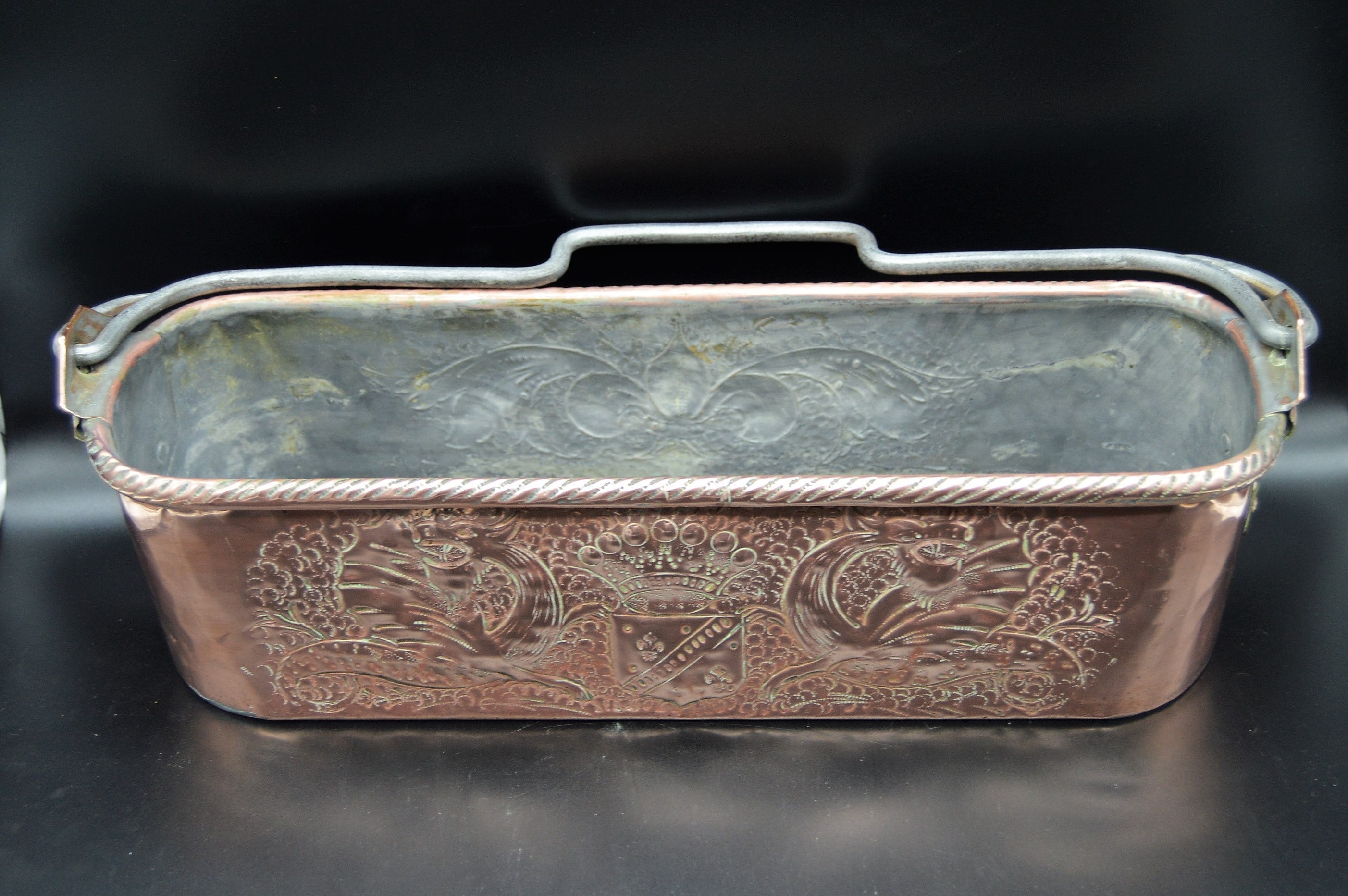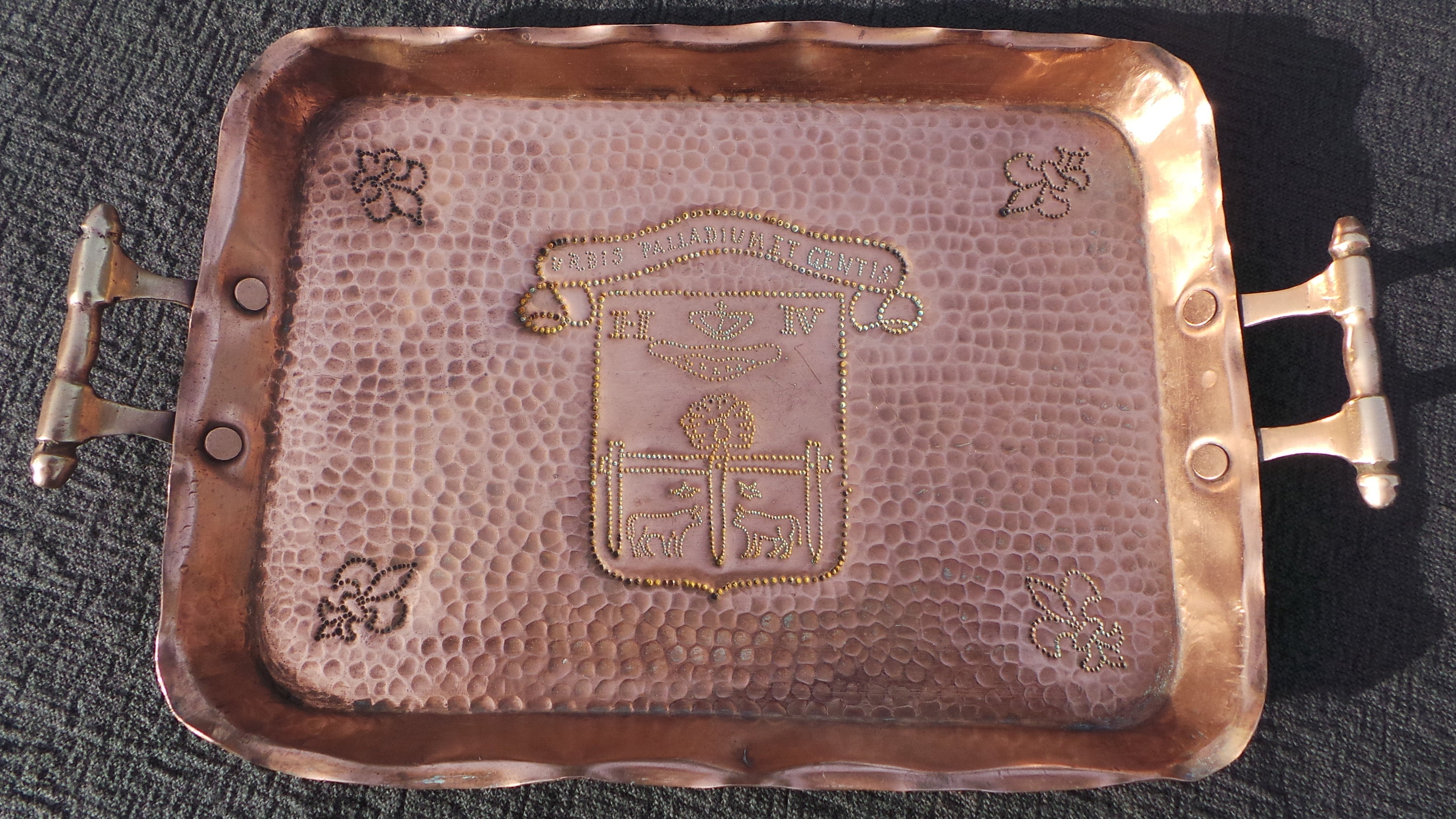
Souvenir Ware from Pau post 1930's. It reads "URBIS PALLUDUM ET GENTIS" translated from the latin means Safeguard of the city and the Nation
Ancient decorative copper comes in many shapes and sizes, many different decorations, including dates and coats of arms.
What to look for in ancient decorative copper.
1. The patina - generally rich and with signs of wear and age.
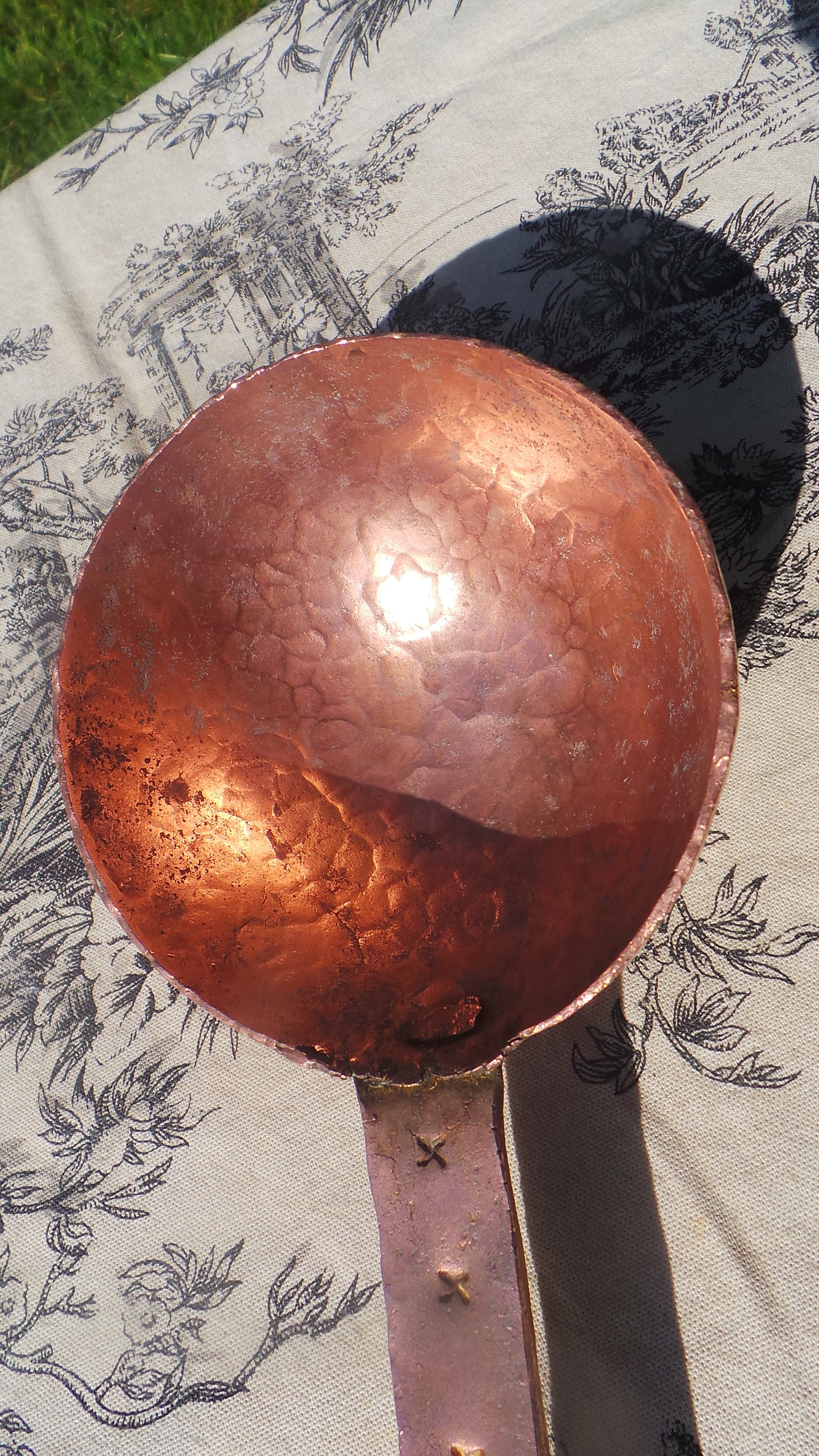
True antique Ladle with signs of use and wear, primitive design, old signature, flattened hammering, thick gauge fabulous deep colour.
2. Signs or wear. For instance, if a tray has an embossed, repousse or chased design then look for cleaner in the crevaces and flattening of the design where it has been used.
3. Dates. Careful with these - Pau for instance is allowed to put the date of Henry IV 1553 since 1829. It is not usual to have a date on any copper unless it is marking an anniversary!
4. The gauge of copper. Decorative copper items from the mid 1800's or before are usually very thick as they have been hand hammered from a sheet copper that has been flatened by hand and not by a large machine. More modern items are usually thin as these pieces were made for the tourist market, needed to be cheaply made and are rather decorative than useful.
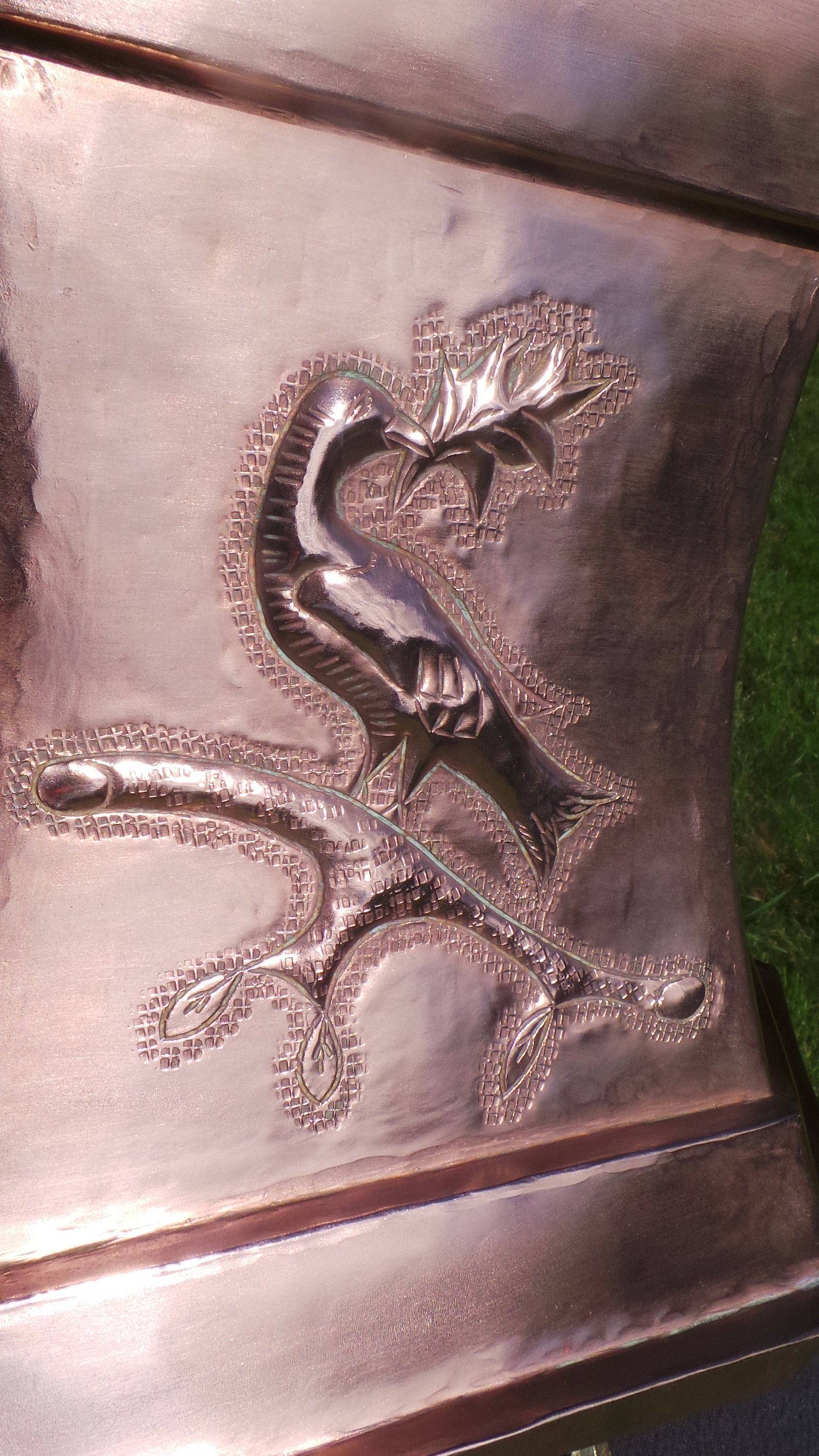
Hand hammered 'repousee' and chased work from a Lavabo from the late 1800's.
5. Tinning or lined items. Usually any copper pot has a lining of tin, stainless steel, nickel or silver - decorative pots generally, will have no such lining. Good old pots will have a dark - more than likely - tin lining - if it's plain copper it is generally for the tourist market and for decoration only. Be careful with tin linings too, they can go dark is as little as 5 years without any use. Look for retinning, splashes over the edges, swirls from hand tinning and wear with copper coming through.
This of course, isn't relevent when it comes to jam pans, patisserie pans, sugar craft or beer making 'coppers'.
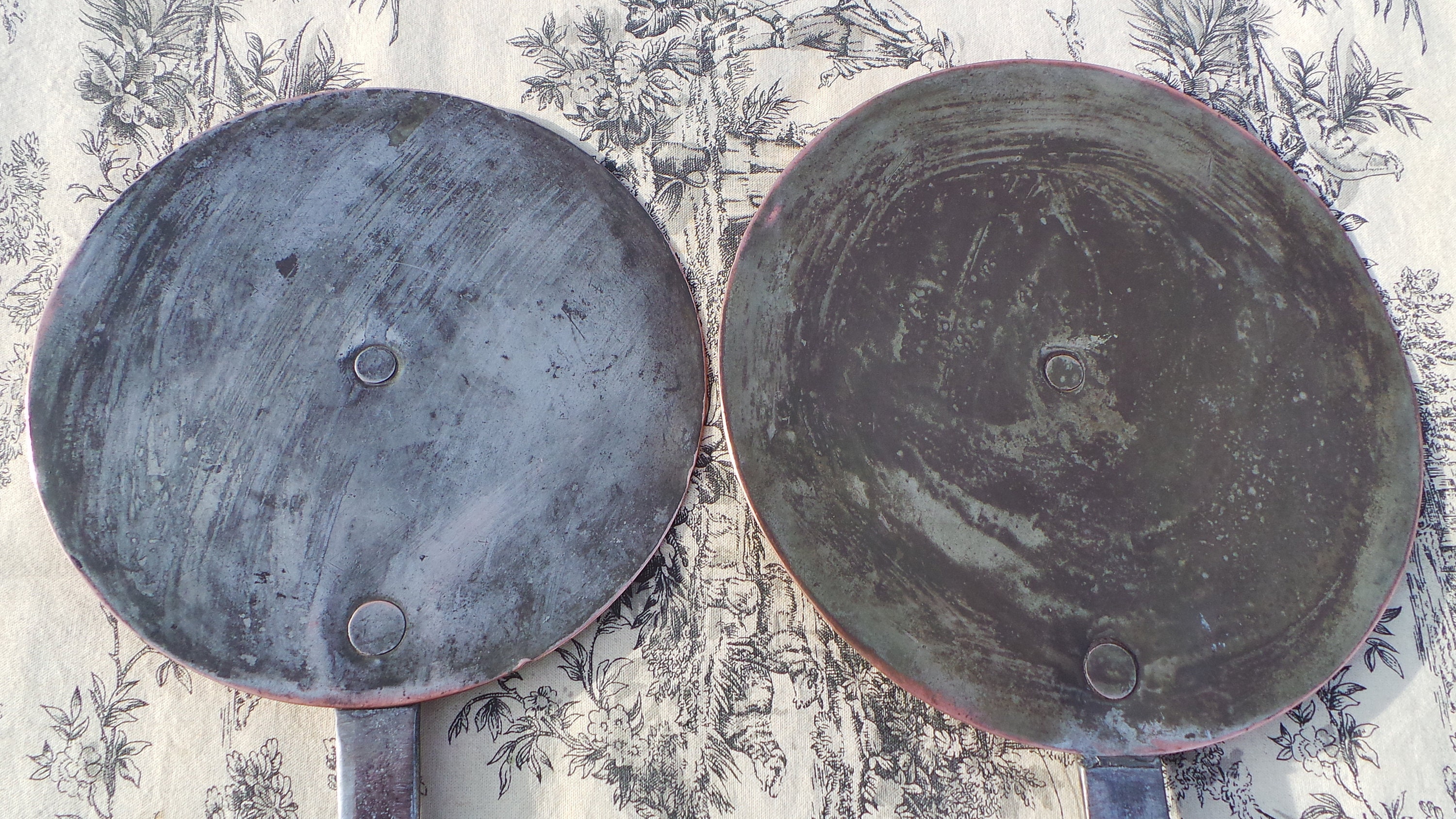
Very Old Darkened Tin
6. Signs of age. Look out for a lack of crispness in the decoration. Ancient items that are hundreds of years old will have a flattening of the surfaces, sometimes the decoration will be very difficult to read or decipher. They can be over polished and have thinning of the copper. Souvenir item will be chased hammered from the back by hand and generally will look very good! They will use the motifs and the decoration of the time they are commemorating.
Modern reproductions will be mainly hammered from the back ' repousee' work and/or chased and although decorative will by crude in design and look 'hand made'.
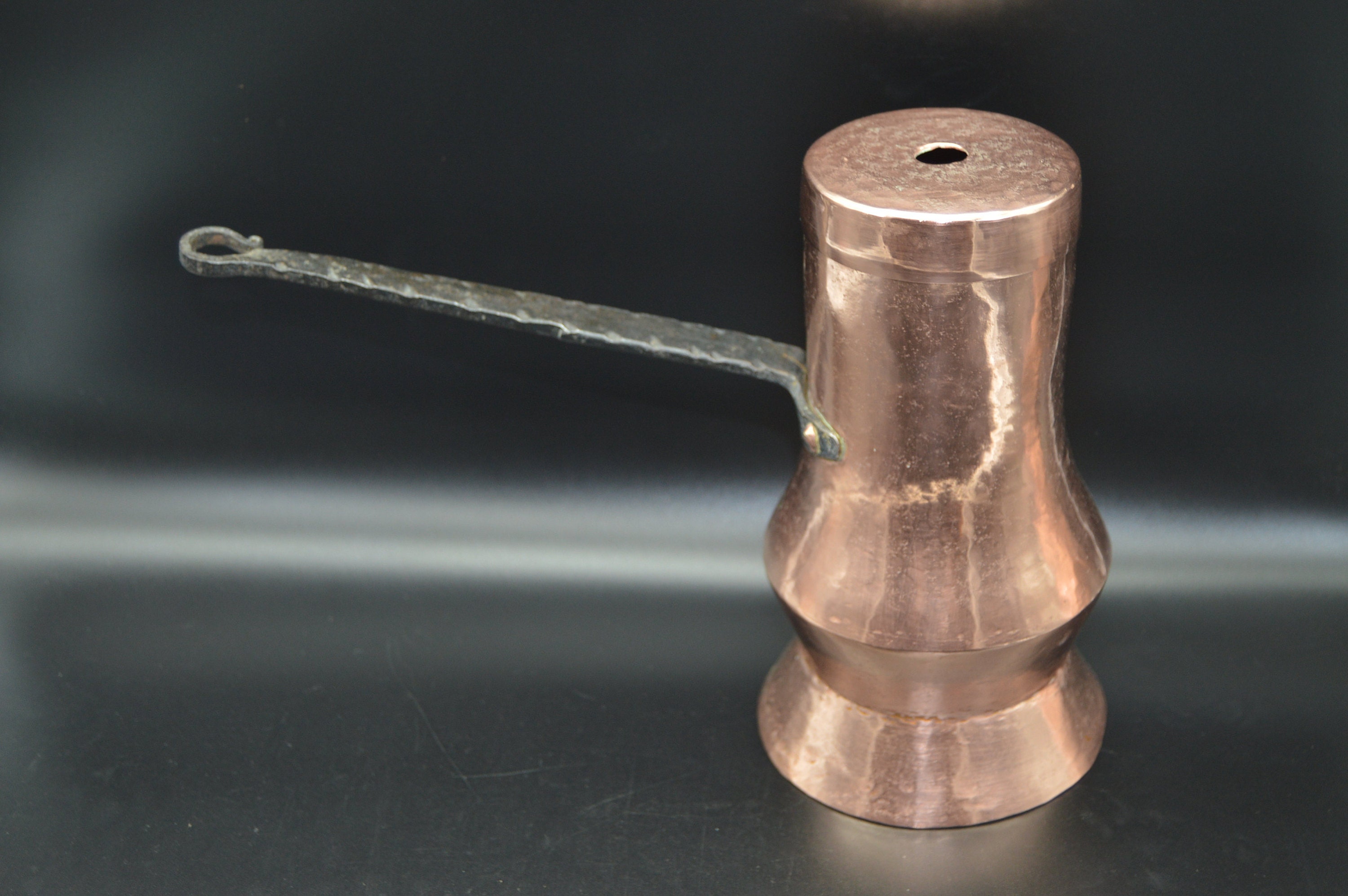
7. Just because something looks crudely made does not make it very old.
Generally, the older the piece the better made it is, look for exquisite, extraordinarily fine workmanship. Copper is an expensive material, over the years if an item is not worth keeping it will be melted down and something else will be made from the metal.
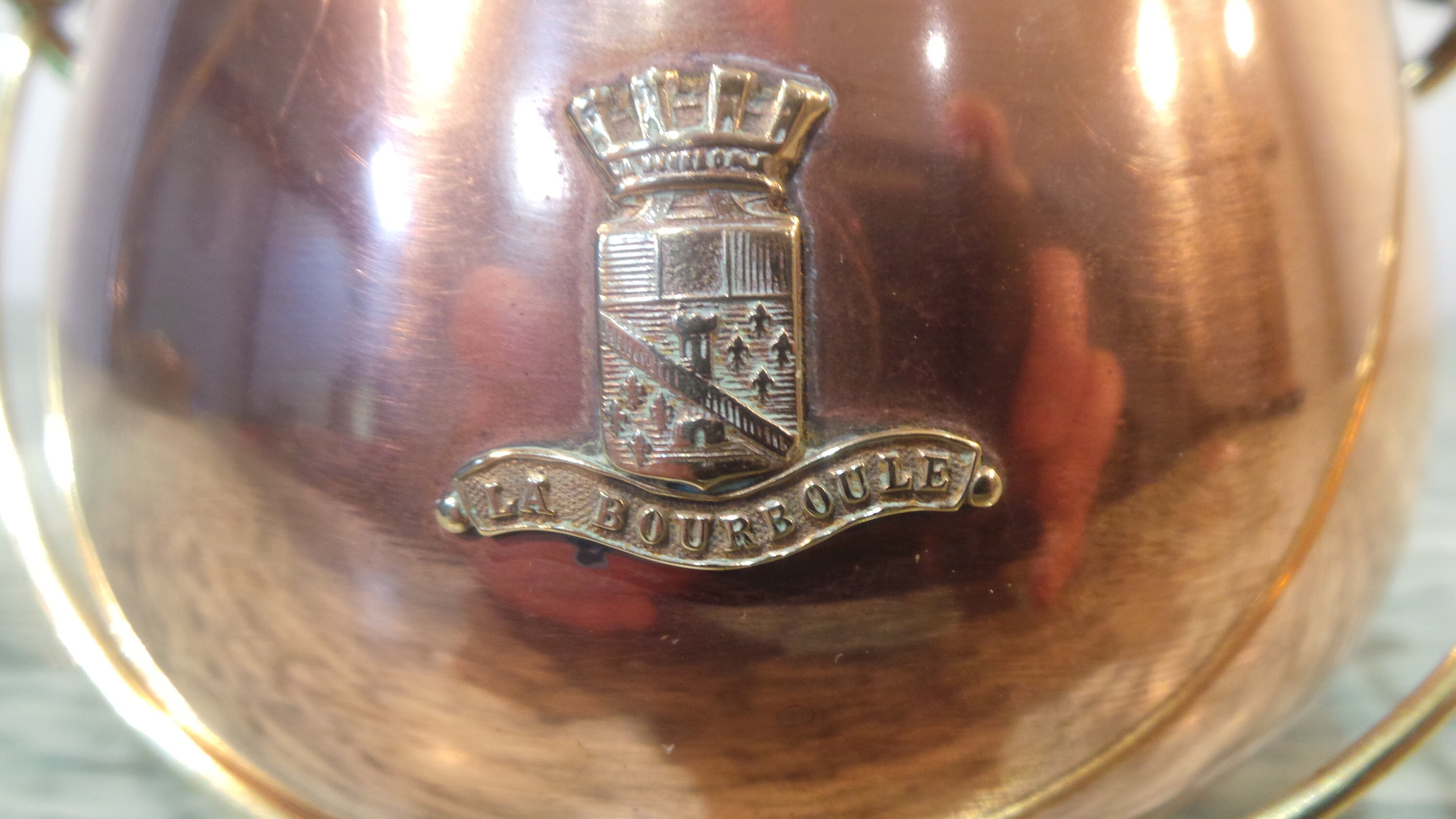
Modern Souvenir Cast and affixed plaque work from the 1970's
8. How it's made. Generally, if you find a good piece of souvenir ware it will have been made using the techniques of the period. It may have castellated joints, crudely made rivets, aging bangs and dings, seamed joints, cast iron handles, irregular hammering, "olde worlde" motifs such as heraldry and primitive figures and animals.
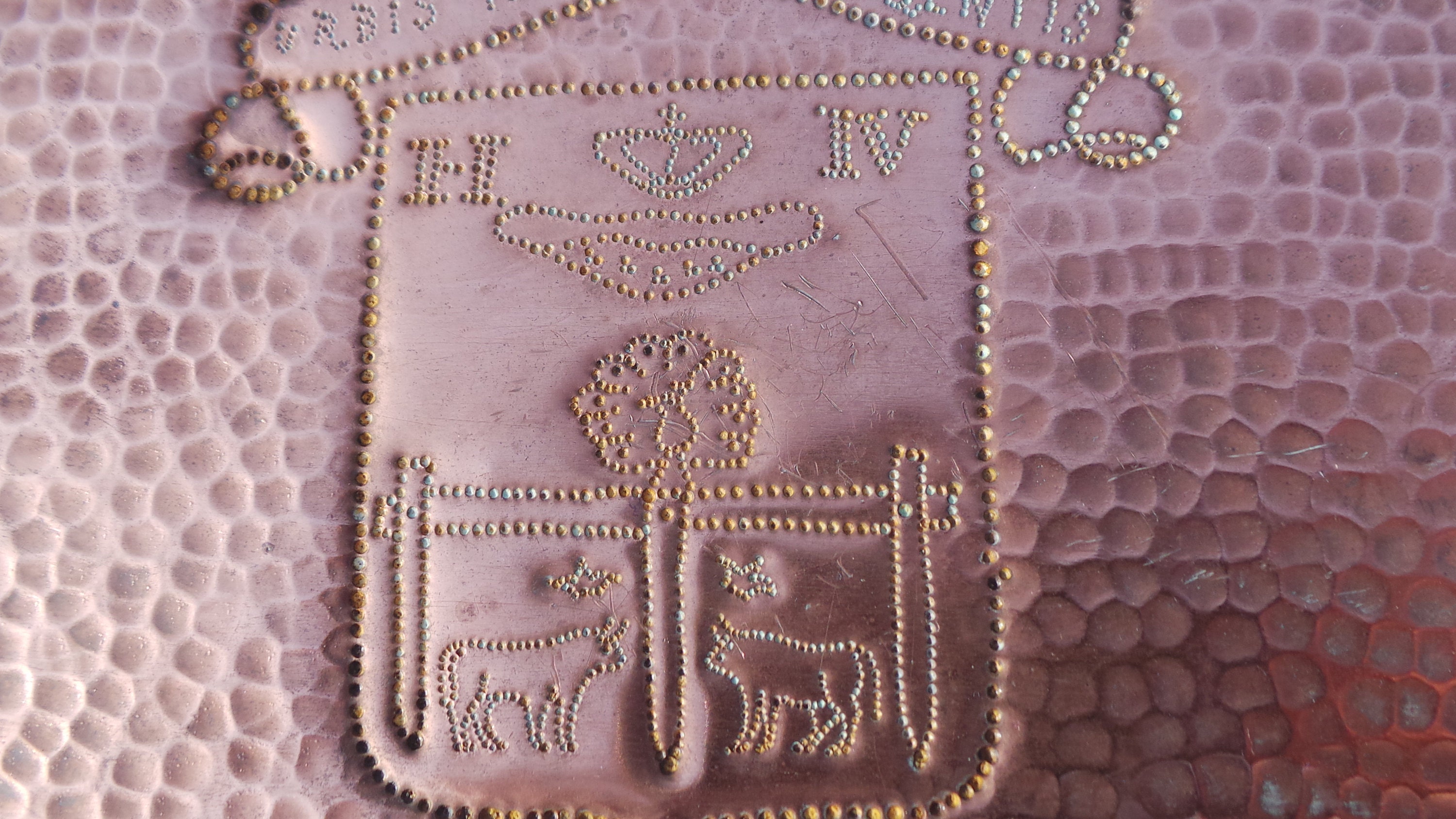
Pau Souvenir Ware
9. What is was used for? If an old pot is highly decorated it would be unusual for it to be used for any sort of cooking. Practicality has always been foremost in any Chef's kitchen, whether it is medieval or modern, ease of cleaning and lack of nooks and crannies in a piece is paramount. If you have a surface that is unevenly hammered it doesn't transmit heat as evenly as copper can. Highly decorated pots are generally not for everyday cooking - they are for decoration. But they do look very good!
10. The design of the pot. Copper is expensive and was only bought by the wealthy. Large chateaux from the 19th onwards have "batterie de cuisine" large groups of pans, numbered. Big stock pots and fish kettles and lots of gratins sold to them by the likes of Gaillard or Dehillerin. They do come onto the market but are rarely highly decorated - they were in the kitchen - somewhere that was rarely visited by the reigning family so they were needed just for their practicality not their decoration!
www.normandykitchencopper.com
www.etsy.com/shop/normandykitchen

